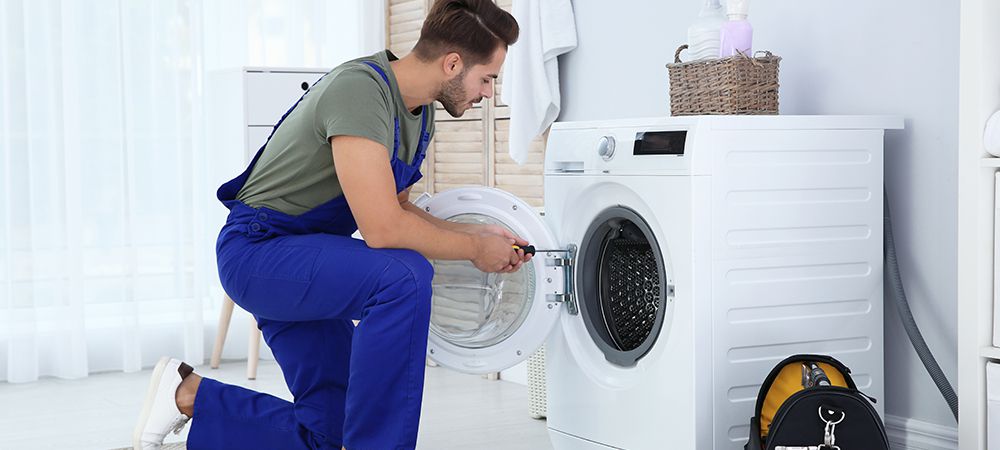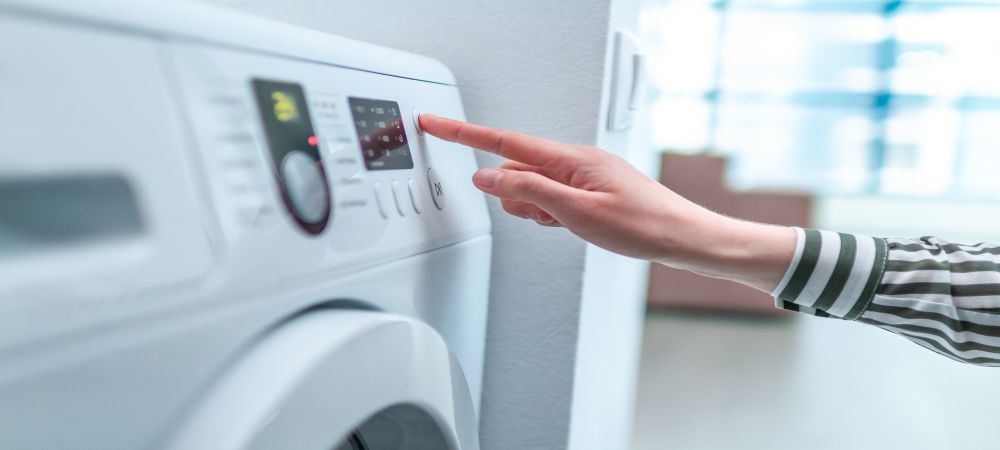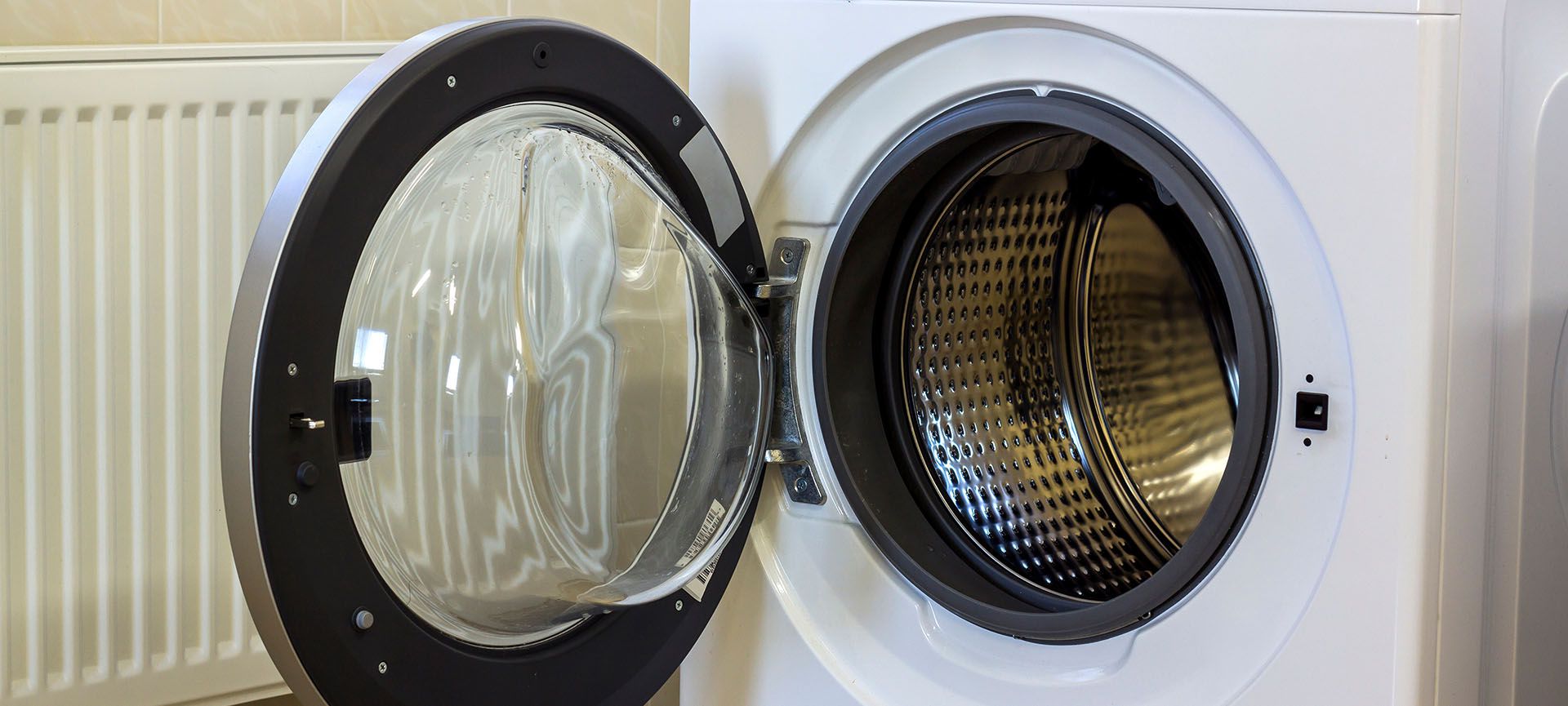Electric clothes dryers are a godsend for homeowners. Although they can last for many years, they may encounter minor problems at some point during their life cycle. Such issues can prevent your dryer from functioning properly. As a result, your clothes may remain wet or damp even after the drying cycle. In this article, we will explore some of the most common electric dryer problems, paying particular attention to the parts that tend to malfunction.
What Are the Most Common Electric Clothes Dryer Problems?
When electric dryers act up, the problem often has something to do with the following components:
- Heating element
- Thermal fuse
- Cycling thermostat
- High-limit thermostat
- Ducting system
To figure out the culprit, you will need to do a little testing and troubleshooting.
Before getting started, here are some tips to keep in mind:
- Don’t forget to unplug the clothes dryer from the power source.
- The owner’s manual is your best friend. Refer to it for instructions on how to access, remove, and replace certain parts. After all, the exact removal and installation process may vary depending on the manufacturer and model.
- Make sure that the multimeter is properly set up and calibrated before use. The information you need should be available in the manufacturer’s instruction manual.
- Always detach the component you want to test from the dryer.
- If your dryer is still under warranty, it is best to call the manufacturer before doing anything to your appliance. This is because fiddling with the unit may violate the terms of your warranty.
- Your safety should be your number one priority. When unsure, stop what you are doing and call an expert repair technician instead. The last thing you want is to hurt yourself, start a fire, or damage your clothes dryer even further. Besides, a clothes dryer repair in the Greater Toronto Area is relatively affordable and won’t burn a hole in your wallet.
Related article: What Is the Cost of Fixing a Clothes Dryer in Toronto?
1. The Heating Element Is Broken
In electric dryers, the heating element is responsible for warming the air inside the drum. This, in turn, dries your clothes, linen, and other textiles. Over time and with repeated use, it is not uncommon for the heating element to go wrong. When this happens, your dryer may not get warm enough to dry the clothes. Alternatively, the heating element may also overheat, posing a safety threat.
To check if the heating element is working properly, you have to test it for continuity using an ohmmeter or a multimeter. Ideally, it should display a read of 20 to 50 ohms. If there is no continuity, it is a clear sign that the element has crashed and needs to be replaced.
2. The Thermal Fuse Is Blown
A thermal fuse is a small safety device typically found in the back cover panel, nestled within or on top of the exhaust duct. It is essentially designed to prevent fires. When the dryer begins to overheat or reaches a certain temperature, the fuse will trip in response. This mechanism, however, can prevent your appliance from working properly. For example, it may fail to generate the amount of heat needed to dry the clothes, which means that they will remain wet or mostly damp even after the drying process.
To determine if the fuse has blown, you will need to test it using a multimeter. Begin by setting the multimeter to the lowest RX setting. Touch the right multimeter lead to the right terminal on the fuse, then repeat the process on the left side. The multimeter needle should move accordingly or display a reading of zero resistance. If not, you probably have a blown thermal fuse.
Take note that the thermal fuse is usually a single-use component, which means that it can’t be reset once it has tripped. Instead, you will need to replace the fuse.
3. The Cycling Thermostat Is Defective
The cycling thermostat is in charge of regulating the temperature inside your dryer. Essentially, it works by switching the heating element on or off to maintain the ideal temperatures. Once the thermostat has gone kaput, it won’t be able to sense the temperature accurately, as well as keep the temperature even. It could also cause the dryer to overheat or fail to shut off when needed.
You can check if the cycling thermostat is defective or not with the use of a multimeter. Simply connect the multimeter test leads to the right wire terminals. If the display shows an infinity reading, it indicates that the thermostat is broken and needs to be replaced.
Related article: How to Repair an Overheating Clothes Dryer?
4. The High-Limit Thermostat Is Faulty
Modern dryers are typically equipped with two types of dryer thermostats – cycling thermostat and high-limit thermostat. The high-limit thermostat is designed to keep track of the temperature and to shut off the heating element once the dryer begins to overheat. If it has crashed, the element may stay running for too long or generate too much heat, which can be dangerous.
To know if the high-limit thermostat is functioning, test it the way you would with a cycling thermostat. It will have to be replaced with a manufacturer-approved replacement part if the multimeter displays a reading other than zero.
Related article: What to Do with Your Dryer Not Heating Up
5. The Ducting Is Obstructed
A clothes dryer can either be vented or ventless. A vented unit, as you may have guessed, will require the installation of a venting duct.
The ducting system essentially works by ejecting the hot air outside. So, if the ducting is clogged, the warm air will end up trapped inside the dryer, causing it to overheat. You may also notice your clothes taking too long to dry or feel hot to the touch after the drying cycle. Furthermore, you may even detect a burning smell coming from the dryer. In the worst-case scenario, it may even start a fire.
To avoid these dangers, make sure to clean the ducting at least regularly. This also involves clearing out any buildup lint, dust, dirt, and other unwanted debris. If the ducting is made of flexible material, ensure that it is properly straightened and not twisted.
An Important Heads-Up: Don’t Forget to Clean the Lint
You could avoid a plethora of dryer problems if you make it a point to clean the lint regularly. A dryer’s lint trap is essentially designed to catch the lint. Without regular cleaning, the lint will accumulate, preventing the air from flowing freely and lowering drying efficiency. That is, your dryer will have to work harder and spend more time drying the clothes, which can cause your electric bills to skyrocket.
More importantly, the buildup of lint is also a leading cause of dryer fires. So, by cleaning the lint trap or screen after every laundry session, you can significantly reduce the likelihood of fires, keeping you and your family safe.
Call an Expert for Your Clothes Dryer Repair Needs
Over time, your dryer may run into some problems – just like any other household appliance. Although some issues can be fixed the do-it-yourself way, others will require a call from reputable appliance repair companies. Even if you do manage to troubleshoot and fix the problem, it is still recommended to have your appliance serviced by a professional every now and then. A lack of dryer care and maintenance, after all, can be a fire hazard and a safety concern.
If you need an experienced repair technician to take a look at your dryer, we’ve got you covered. Our team of appliance repair is composed of repair professionals who are committed to 5-star service and customer satisfaction – all without breaking the bank. Fill out this contact form and schedule an appointment today!








